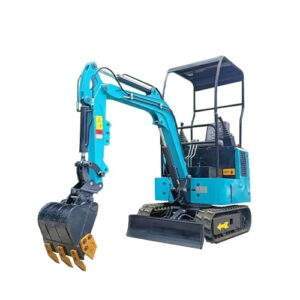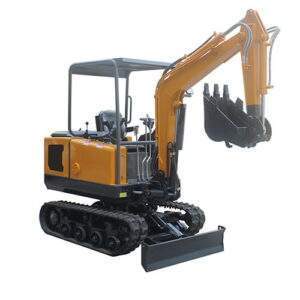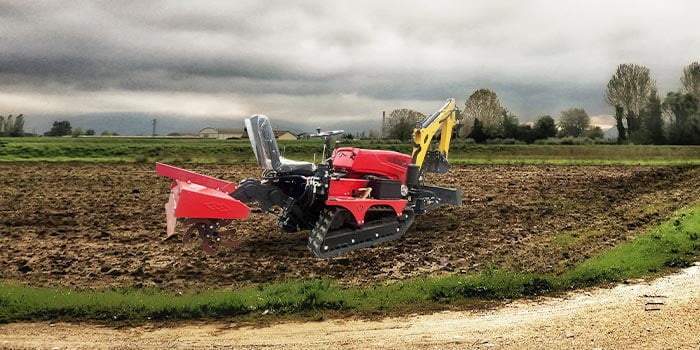How to Choose the Right Small Crawler Excavator
Welcome to My Blog!
Before we dive into the content, I’d love for you to join me on my social media platforms where I share more insights, engage with the community, and post updates. Here’s how you can connect with me:
Facebook: https://www.facebook.com/profile.php?id=100072217509763
LinkedIn: https://www.linkedin.com/company/74949059/admin/dashboard/
YouTube:www.youtube.com/@tractormanufacturer-lc5qz,www.youtube.com/@excavatormanufacturers-sn9hk
TikTok: www.tiktok.com/@tractormanufacturer, www.tiktok.com/@excavatormanufacturers
Now, let’s get started on our journey together. I hope you find the content here insightful, engaging, and valuable.
Introduction

Are you in the market for a small crawler excavator? Whether you’re a homeowner tackling a DIY project or a contractor working on a small-scale construction site, choosing the right machine can make a big difference in the efficiency and effectiveness of your work. This guide will walk you through the essential factors to consider when selecting a small crawler excavator.
Understanding Small Crawler Excavators
Small crawler excavators, also known as mini excavators, are compact construction machines designed for tight spaces and smaller-scale projects. They offer versatility and maneuverability, making them ideal for tasks such as digging trenches, landscaping, and demolition.
Key Factors to Consider
Operating Weight
The operating weight of a small crawler excavator determines its digging force and lifting capacity. For lighter tasks like landscaping or digging small trenches, a smaller machine will suffice. However, for heavier work, such as digging foundations or breaking up concrete, you’ll need a more robust model.
A smaller machine with a lower operating weight is generally more maneuverable and can fit into tighter spaces. It’s also easier to transport and requires less fuel consumption. However, it may have limitations in terms of digging depth and lifting capacity.
On the other hand, a larger machine with a higher operating weight offers greater digging force and lifting capacity. It can handle heavier loads and tackle more demanding tasks. However, it may be less maneuverable and require more space to operate.
Digging Depth and Reach
The digging depth and reach of a small crawler excavator are crucial for determining its capabilities. Consider the depth of the trenches you need to dig and the horizontal distance you need to reach.
A deeper digging depth is necessary for tasks such as excavating foundations or installing underground utilities. A longer reach is useful for working in confined spaces or reaching areas that are difficult to access.
Engine Power
The engine power of a small crawler excavator affects its performance and efficiency. A more powerful engine can handle heavier loads and work for longer periods without overheating.
A more powerful engine provides greater digging force and lifting capacity. It also allows the excavator to operate attachments more efficiently. However, it may consume more fuel and be louder.
Track Width
The track width of a small crawler excavator influences its stability and ability to work on uneven terrain. A wider track provides better stability, while a narrower track enhances maneuverability.
A wider track provides better stability on slopes and uneven terrain. It also distributes the weight of the excavator more evenly, reducing the risk of sinking or getting stuck. However, it may be less maneuverable in tight spaces.
A narrower track is more maneuverable and can fit into tighter spaces. However, it may be less stable on uneven terrain.
Hydraulic System
The hydraulic system powers the excavator’s movements and attachments. A high-flow hydraulic system is essential for operating hydraulic attachments efficiently.
A high-flow hydraulic system provides greater power and speed for operating attachments. It’s essential for tasks that require heavy-duty attachments, such as hydraulic breakers or augers. However, it may consume more fuel.
Attachments
Small crawler excavators can be equipped with a variety of attachments, such as buckets, breakers, and augers. Consider the specific tasks you need to perform and select the attachments accordingly.
Common attachments for small crawler excavators include:
- Standard bucket: For general digging, loading, and grading.
- Narrow bucket: For digging in tight spaces.
- Wide bucket: For moving large amounts of material.
- Ripper: For breaking up hard-packed soil or asphalt.
- Hydraulic breaker: For demolishing concrete or breaking up rocks.
- Auger: For drilling holes for fence posts, trees, or utilities.
Cab Comfort and Visibility
A comfortable and spacious cab enhances operator productivity and safety. Good visibility is essential for precise operation.
A comfortable cab with adequate space and ergonomic controls can help reduce operator fatigue and improve productivity. Good visibility is essential for safe and efficient operation. Look for a machine with large windows and a well-designed cab layout.
Maintenance and Service

Consider the availability of parts and service for the small crawler excavator you choose. Regular maintenance is crucial for ensuring optimal performance and longevity.
Regular maintenance is essential for keeping your small crawler excavator in good working condition. Look for a machine with a reliable service network and easy access to parts.
Conclusion
Choosing the right small crawler excavator requires careful consideration of several factors. By understanding your specific needs and evaluating the available options, you can select a machine that is well-suited for your projects.
FAQ
What is the difference between a mini excavator and a compact excavator?
Mini excavators and compact excavators are often used interchangeably, but there can be slight variations in size and capabilities between different manufacturers.
Can I transport a small crawler excavator on a trailer?
Yes, most small crawler excavators can be transported on a trailer. However, it’s important to check the specific weight and dimensions of the machine to ensure it complies with local transportation regulations.
How do I choose the right bucket size for my excavator?
The ideal bucket size depends on the type of material you’ll be digging and the volume of material you need to move. Consult the manufacturer’s specifications for recommended bucket sizes.


